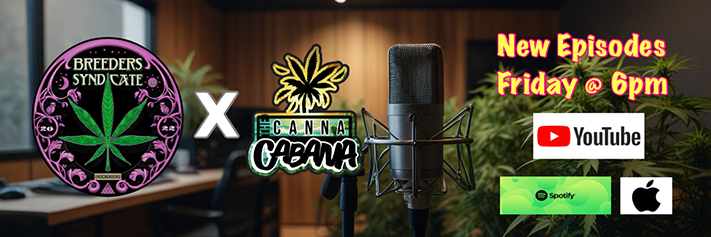I
ntroduction To Making Your Own Silver at Home
This article will describe a way to make colloidal silver at home. After the first batch of colloidal silver is made, the second and future batches should make one gallon of high quality 6 PPM to 8 PPM (Parts Per Million) colloidal silver in one and a half hours.
The fist batch will take about three hours, since it will not have the benefit of "seeding" the gallon with previously "cooked" colloidal silver (this "seeding" is necessary to create better electrical current in the distilled water). Once the first batch is made, future batches can be "seeded," so it will take less time to make these batches.
All of the statistics in this article are based on a 400 mA (400 milliamp) power pack. Should someone use a 800 mA power pack, the necessary times will likely be shorter.
The Power Supply
There are several important aspects of this method, but the key is a 12 volt D.C. power supply. Here are its specifications:
Input (standard outlet in the U.S.):
120 volts AC
60 Hz
20 Watts
Output:
12 Volts DC
400 mA (milliAmps)
The output can actually be anywhere between 400 mA and 800 mA. To write this article, the 400 mA was used.
As a physical discription, these are power packs that consist of a small black box, with the plug sticking directly out of the box. In other words, the black box plugs directly into the wall. It has two long wires sticking out the box. What is on the other end of the wires is not relevant because you will cut the ends off and strip the two wires (obviously while the power pack is unplugged).
Such power packs should be available at Radio Shack or any electronics store. They can be bought in bulk over the Internet at very inexpensive prices.
The Silver Wires
The silver wires should be 12 or 14 gauge (AWG) pure silver wire (14 guage is highly preferred), between 99.95% and 99.999% pure silver. You should NOT use sterling silver, as it contains high levels of nickel, which is toxic. Make sure you buy pure silver wire.
There are several vendors of silver wire, but the silver wire you buy should be purchased by the foot, and you should buy several feet of it, since you will need 2 wires at least 12 inches long and you will use the wires up every several months, depending on how often you make the colloidal silver.
AT ALL TIMES, EXCEPT DURING THE COOKING OF THE COLLOIDAL SILVER, THE SILVER WIRES SHOULD BE PROTECTED FROM ANY LIGHT. THEY SHOULD BE WRAPPED AND STORED SO THEY ARE NEVER EXPOSED TO LIGHT. SILVER WILL CHEMICALLY REACT TO LIGHT.
The Glass Jars
You will need a 1 gallon wide-mouth glass jar. It is critical this jar is made of pure glass, and not plastic!! Plastic can create a static charge.
The easiest way to obtain such a jar, if you cannot find one, is to buy a 1 gallon glass jar of pickles. At Wal-Mart, for example, the ones with the food stores in them, you can buy pickles in bulk in 1 gallon glass jars. Wal-Mart also has a section with many glass jars in it. At grocery stores the large jars will be in the bulk food section or in the pickle section.
You will also need a plastic funnel which has a very wide bottom and a large funnel with has a narrow bottom. The wide-bottom funnels can be found at Wal-Mart in the canning section, or at any grocery store that has a canning section. These funnels are not critical, but they come in very handy when pouring the water from jar to jar.
You should also have some amber jars for storing the finished colloidal silver. Even if you are able to buy the amber jars, in quart or half-gallon size, you still need to store the jars in a dark place. Here is one vendor of quart-sized (i.e. 950 cc) amber jars (product: 4011-05):
http://www.sks-bottle.com/340c/fin2b.html
Construction of the Unit
You will need two alligator clips, which can be small, but yet large enough to hold a 12 or 14 guage silver wire in place (these would be medium sized alligator clips at Radio Shack). Usually, these clips come in packs of 10 or so alligator clips.
With the power pack unit unplugged, during construction, cut-off whatever is at the end of the wire on the original power pack. Separate the two wires for several inches. Strip each wire and solder an alligator clip at the end of each wire. Use one red alligator clip and one black alligator clip for the two wires. It doesn't matter which color goes on which wire.
You may want to use one 100 ohm resistor. There are pros and cons associated with putting a 100 ohm resistor on one of the wires. The good news is that it will protect the power pack should to two silver wires touch each other by accident. The bad news is that putting a 100 ohm resistor on one of the wires will DOUBLE the length of time it takes to cook the colloidal silver.
Most people will not use a resistor. They will plug the power pack into a power strip, with the power strip turned off. They will then set up their silver wires in place. With the silver wires in place they will turn the power strip power on. Likewise, when they have to remove the silver wires for cleaning, they will turn off the power pack before they touch the silver wires.
It is your choice.
If you do choose to use a resistor, it needs to be put on one of the wires (it doesn't matter which one) between the power supply and the alligator clip. It doesn't matter in what direction the resister is pointed.
If you are going to use an LED, to display a current (which really isn't necessary), put it on the other wire, meaning do not put it on the same wire the resistor in on.
Other Comments
You will definitely want to buy a small, battery powered, hand-held laser, to see how dense the colloidal silver is becoming. These can also be purchased at Radio Shack or any office supply store. After the colloidal silver has been "cooking" for 20 or 30 minutes, if you shine the laser through the glass jar, and look at the laser beam perpendicular to the beam, you can see the progress of the colloidal silver. In other words, your line of sight is perpendicular to the laser beam, which is pointed through the water.
You will probably want a long WOODEN spoon to stir the colloidal silver from time to time. However, stirring the colloidal silver will actually slow down the cooking slightly.
You will need a WOODEN board to hold the wires in place on top of the glass jar. Certainly do not use metal or it will short-circuit the silver wires. For example, use a small cutting board, with two 1/8" holes drilled in the middle, 1 to 1 1/4 inches apart. Put one alligator clip on the end of each 12 inch silver wire to keep the wire from falling into the water. The other end of the silver wire is pushed through the hole in the wood and goes into the water. Thus, the wooden board in placed on top of the wide mouth jar and holds the silver wires in place.
The alligator clip is positioned so that the silver wire goes down to about 1 inch from the bottom of the jar.
The Type of Water to Use (see *note below, this is for drinking)
The ONLY type of water you should use is distilled water, which has been distilled by water distillation (not reverse osmosis). There are NO exceptions. All other types of water have too many impurities. While water impurities help speed up the cooking of the colloidal silver, the minerals in the water can bind to the silver particles and may eventually create a health condition known as argyria. Argyria is a condition where the skin turns grey or blue-grey because of taking high doses of impure colloidal silver over time. It is very difficult to reverse the condition, so it should be avoided.
DO NOT ADD SALT OR ANYTHING ELSE TO THE WATER - PERIOD. While salt will allow current to flow, it may create silver chloride, which can cause argyria over time.
Do NOT add ANYTHING to the water if it will create a silver compound, such as silver chloride.
Do NOT add preservatives, minerals, EDTA, proteins, gelatin, coloring, honey, etc.
*NOTE:
You may use tap water ONLY if you are going to use the colloidal silver for EXTERNAL purposes. It is 10 times easier to use tap water than distilled water because it allows electrical currents to flow much, much better than distilled water. However, such colloidal silver should only be used for external purposes.
No matter what kind of water you use, if the water turns black, throw the water away, it has too many impurities in it.
Heating the Water
The water will always be put into the one gallon jar in two parts. For the first part, one-half quart (e.g. one-half liter) of distilled water is put into the one gallon jar. This is either distilled water or distilled water from a batch of colloidal silver (this will be explained below). Either way the water is at room temperature. The main reason for putting this water in first is to keep the glass jug from breaking when you pour the boiling water into it.
The second part of putting liquids into the jar, is when you put pure distilled water, which was heated to a low boil, into the jar to finish filling the one-gallon jar up with water.
In other words, first put 1/2 quart of distilled water or colloidal silver water, at room temperature, then put in low boiling distilled water to fill the rest of the jar.
Always heat the distilled water in a STAINLESS STEEL POT WHICH IS UNCOATED! NEVER use an aluminum pot or a stainless steel pot which is copper coated or has any other coating. Heat until it comes to a low boil. Then pour the hot water into the jar that already has the room temperature water in it. This is when you use the wide-mouth funnel, though you may use it at other times as well.
Instructions For Cooking the FIRST Batch of Colloidal Silver
The instructions for cooking your first batch of colloidal silver is different than at other times. This is because your first batch does not have the luxury of having previously cooked colloidal silver put into the jar to help enhance the electrical current between the two silver wires.
Pure distilled water, which is the only kind of water you have for the first batch, conducts electricity very, very poorly. The good news is that as the colloidal silver is made, the current will start to flow better and better. Nevertheless, the first batch will take about three hours to make.
Plug the power supply into a power strip which has an on/off switch, so you can turn the power on and off with a switch. Turn the power off so you don't damage the power supply while you are getting set up.
Place the alligator clips onto the silver wires, one black on the top of one wire and one red alligator clip on top of the other wire. Do not let the silver wires touch, just in case you forgot and left the power on.
Put the silver wires through the wood and into the water and make sure the two wires are not touching each other or the side or bottom of the glass jar. Lower the silver wires to about 1 inch from the bottom of the glass jar.
Mark the time and turn the power on.
EVERY 4 or 5 minutes you need to:
1) Turn off the power,
2) Remove the silver wires from the jar,
3) Wipe the two silver wires with a paper towel AND a non-metallic pot scrubbing pad (e.g. 1/4" thick nylon Scotchbright pad),
4) Put the silver wires back into the water, and
5) Turn the power back on.
All of this is necessary to prevent a black crud from building up on the silver wires and floating to the bottom of the jar.
This cooking should last about three hours (which includes the frequent stops to clean the silver wires). The water should NOT turn milky or black, but it may turn light yellow, if looked at from above. (These numbers are based on a 400 mA power pack.) Light yellow is good, but not necessary.
Laser Check
The real test is the laser light. After the first half hour or so, you should start shining the laser through the water from time to time, looking at it with a line of sight which is perpendicular to the laser beam. You will start to see the beam, over time, get brighter and thicker. The thicker and brighter the beam, as it appears in the water, the higher the PPM of the colloidal silver.
By the time you are finished the beam should look solid red (or whatever color laser you have), with crisp edges at the top and bottom of the light. This is your sign the colloidal silver is ready. After three hours of cooking and cleaning, you should be able to see what this type of laser light looks like.
When you are done cooking the colloidal silver, put the water into the quart jars. Put aside one of the amber jars to "seed" the next batch of colloidal silver. You will use one-half of this quart jar to "seed" the next batch. Every subsequent batch needs to be "seeded" from one of the prior batches.
The Second, Third, etc. Batches
There are only two differences between the second, third, etc. batches and the first.
The first difference is that the half-quart of distilled water, at room temperature, that was put into the jar will be replaced by a half-quart of colloidal silver previously cooked. This is important to help the electrical current flow and shorten the time it takes to make a batch.
The second difference is that the second, third, etc. batches should only take about an hour and a half.
Other Comments
It is important to rotate the silver wires. In other words, do not always put the same silver wire on the red alligator clip and the other one on the black alligator clip.
How you make sure you rotate them is up to you, but the silver wires will last a lot longer if they are rotated at least once per cooking, though they may be rotated during a cooking (after they are cleaned, for example).
Store the silver wires in a dark envelope or other dark place.
Store the colloidal silver in a cool place, but do NOT refrigerate the colloidal silver.
NEVER REFRIGERATE THE COLLOIDAL SILVER.
Store the amber jars in a dark place.
If you buy a pickle jar, it is impossible to remove the pickle smell from the plastic liner in the lid. You may want to just remove the lid and never use it again. Or you could put wax paper between the lid and jar.
An Alternate Method If You Cannot Obtain a Power Pack
If you are not able to obtain the power pack, you can substitute three 9-volt radio batteries. Hook them in series (hook the three battery leads negative to positive, leaving a positive lead at one end and a negative lead at the other end open) so they output 27 volts. The three 9-volt batteries replace the power pack until you can get a power pack.
When using the three batteries, it is better to use a 16 ounce glass jar (i.e. 450 grams). As above, in the first batch you should use distilled water, thus it may take a signficant amount of time to make the first batch. Using the technique above, put 10% or so of this first batch in a glass storage container. Then, put this 10% in the second batch so it will not take as long to make the second batch. And so on.
~www cancertutor.com/Cancer02/CSilver.html













 Great thread hort!
Great thread hort!




